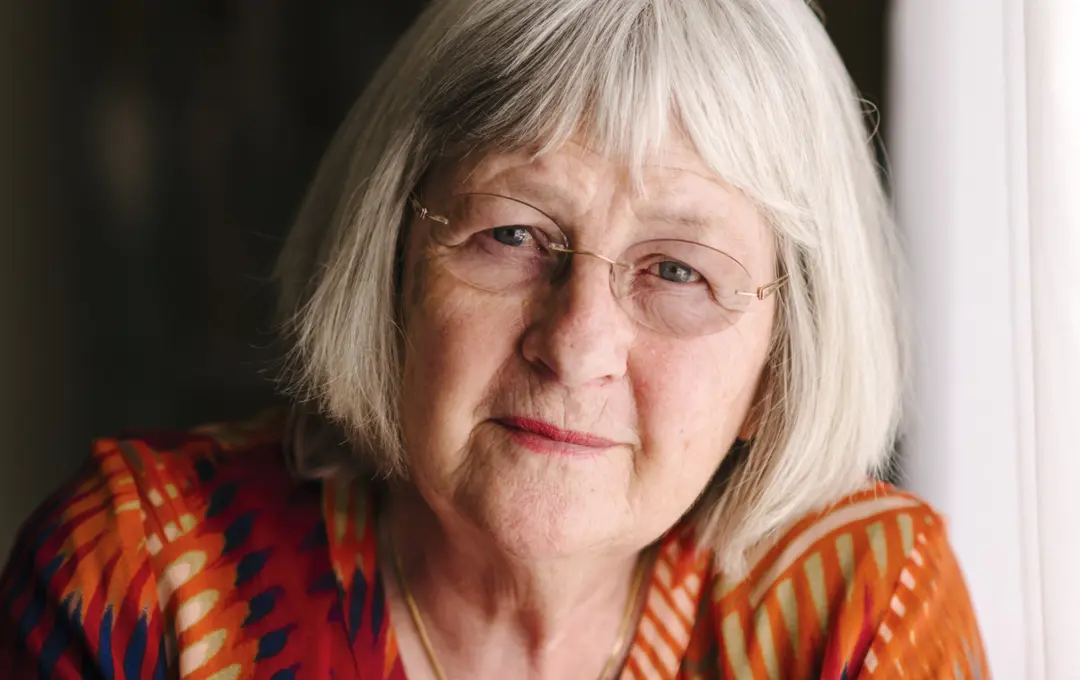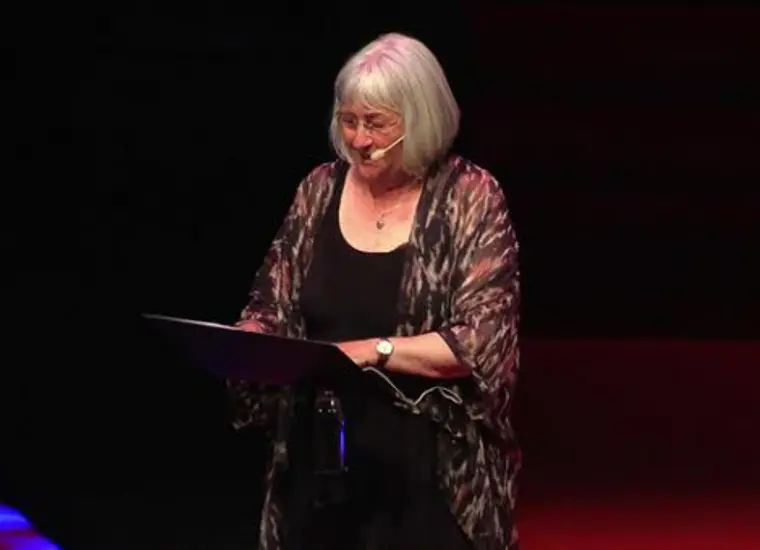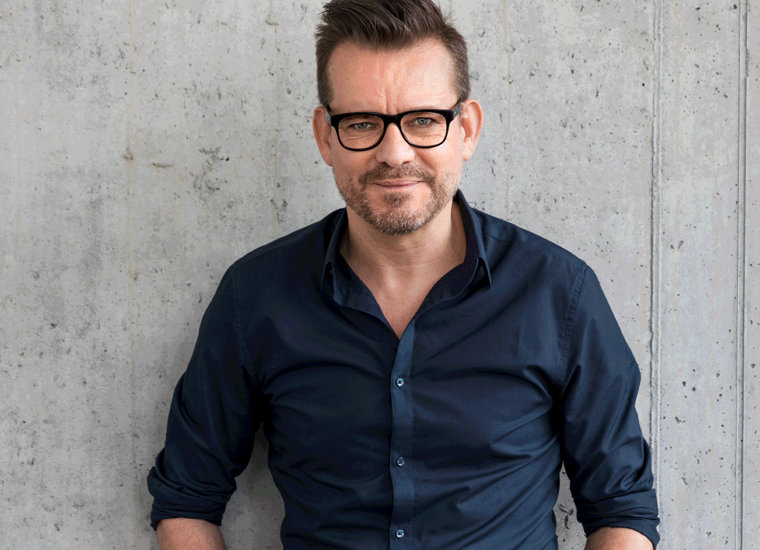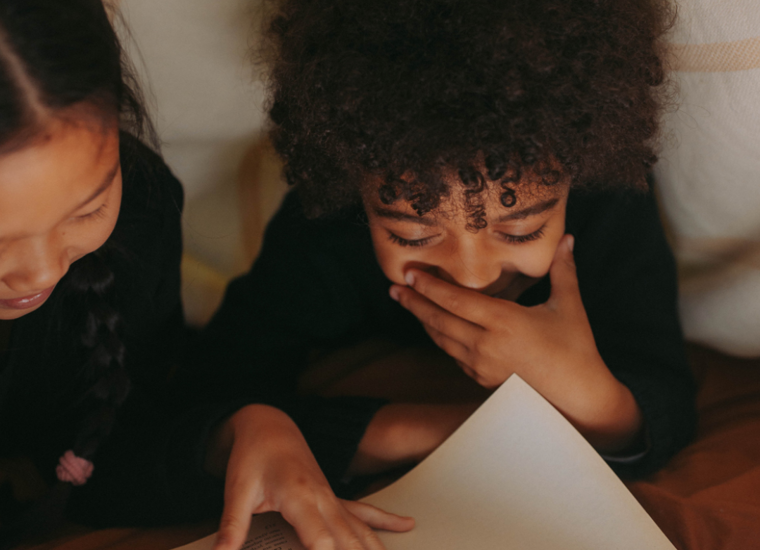A literary pioneer
Barbro Lindgren is the author of several childhood classics. Her innovative and multifaceted body of work includes picture books, children’s poetry, plays, realistic YA fiction, and more absurd prose stories. Including her books for adults she has published over a hundred titles, translated into more than thirty languages.
 Photo: Stefan Tell
Photo: Stefan TellQuick facts
The jury’s motivation
Barbro Lindgren is a literary pioneer. Using adventurous language and rich psychological nuance, she has re-invented not only the picture book for the very young but also the absurd prose story, the existential children’s poem, and realistic young adult fiction. With perfect pitch, she presents to us both playful shenanigans and moments of bright joy, the inscrutable nature of life and the nearness of death.
Barbro Lindgren, born in 1937, is a Swedish author of innovative and multifaceted works for children of all ages. Her body of work includes picture books, poetry, plays, and books for young adults. Since her debut as an author in 1965, she has published over a hundred titles, and her work has been translated into more than thirty languages.
Barbro Lindgren’s stories are often humorous and always possess a uniquely warm tone of voice that speaks directly to the child, whether she is offering amusing escapades or more serious reflections. She has a singular capacity to remember and convey what it was like to be a child, and her seemingly simple style recreates atmospheres and moods that resonate with all her readers, regardless of their age.
Barbro Lindgren has an education in the arts and illustrated several of her own books, including her first book, Mattias sommar (Mattias’ summer, 1965), and the absurd tale of Loranga, Masarin och Dartanjang (1969), about a world where anything can happen. Sagan om den lilla farbrorn (The Story of the Little Old Man, 1979) marked the beginning of a long-lived co-operation with the illustrator Eva Eriksson. Their greatest success came with their series of picture books about little Max and the everyday adventures in the life of a small child. Meanwhile, in Mamman och den vilda bebin (The Wild Baby, 1980) a baby has adventures that are anything but ordinary.
More realistic works include the autobiographical series of books in diary form, Jättehemligt, Världshemligt and Bladen brinner (Big Secret, Top secret, Pages on fire, 1971-73). Here, the author portrays a young girl’s encounter with love and her existential reflections about life. Death seems always close at hand, a theme we see again in the series about Sparvel (1976-79), which depicts the author’s life from age four until she starts school. Reflections on the meaning of life also appear in the fiercely original chapter books Vems lilla mössa flyger (Whose little hat is flying, 1987), Korken flyger (The cork is flying, 1990), and Vad lever man för (What-Are-We-Living-For, 2006), where worn-out stuffed animals are among the unusual cast of characters. Here, Barbro Lindgren finds humor even in a funeral, and refilling the stuffing of a toy elephant can bring it back from the dead.
A unique ability to relive and put words to emotions
This text was written in 2014 by members of the award jury.
Barbro Lindgren, born in 1937, is a Swedish author whose innovative and multifaceted body of work includes picture books for young children, children’s poetry, plays, realistic fiction for young adults, and more absurd prose stories. In all, she has published over a hundred titles, translated into more than thirty languages. She has also written a number of books for adults.
Barbro Lindgren has a distinguished education in the arts and first envisioned a career as a visual artist. But she was also an early writer of stories. Her first children’s book, Mattias sommar (Mattias’ Summer), appeared in 1965. She illustrated it herself; not until the 1970s did she first work with other illustrators. Mattias sommar, which had two sequels, depicts the everyday life of a five-year-old boy spending the summer in the city and making mischief with his friends. Among his more creative ideas: trying to sell his little sister, and running away to his grandmother’s.
During the 1970s, Barbro Lindgren’s realist narratives reached greater depths with two autobiographical trilogies. The first consisted of three novels in diary form: Jättehemligt (Big Secret), Världshemligt (Top Secret), and Bladen brinner (Pages on fire, 1971-73, ill. Olof Landström/ Barbro Lindgren). It follows a young Barbro from age ten to age fifteen. We see a young girl’s encounters with life and love, whose existential reflections are intermingled with ordinary descriptions of schoolwork and friends. The main character’s long period of depres-sion plays a major role in the first book, and death feels always close at hand.
The second autobiographical trilogy is about Sparvel, whom we first meet in Lilla Sparvel (Little Sparvel, 1976) at age four; in the third and final book, Bara Sparvel (Just Sparvel, 1979), she is just starting school. In these books, Barbro Lindgren displays a unique ability to relive and put words to human emotions. Sparvel is frightened by death, but she is not afraid of people who are different. The trilogy’s middle book, Stora Sparvel (Big Sparvel, 1977), centers on her friendship with a man who is a mental patient. The books are illustrated by Barbro Lindgren’s sons, Andreas and Mathias Lindgren.
With the publication of Loranga, Masarin och Dartanjang (1969, ill. Barbro Lindgren) and its sequel, Loranga, Loranga (1970), Barbro Lindgren’s writing took a new direction. Fore-most among the eccentric cast of characters are Loranga, a father who loves bright orange clothes and wears a tea cozy on his head; his son Masarin, brought up on sweet buns and love; grandfather Dartanjang, who emerges from his woodshed every morning with a new identity; and a great-grandfather who has moved into a tree, eats birdseed, and thinks he is a cuckoo. They all live a carefree life, untroubled by rules or norms, in a tolerant world where the thief Gustav, for example, gets to keep everything he steals. In these absurd tales, anything can happen—is the garage suddenly full of tigers? We are not surprised.
During the 1970s, Barbro Lindgren’s output became ever more varied. The collection of poems Gröngölingen är på väg (The Green Woodpecker Is on His Way, ill. Katarina Olausson Säll) appeared in 1974 and is one of her most beloved. What seems simple is philosophically profound, and speaks directly to the child reader. In all, Barbro Lindgren has written half a dozen volumes of poetry for children, and a great number of her poems have been set to music. Many of her works have also been adapted for the stage and the opera, and by 1975, she herself had already published a book of plays, Barbros pjäser for barn och andra (Barbro’s plays for children and other people).
Sagan om den lilla farbrorn (The Story of the Little Old Man, 1979) marked the beginning of a long-lived co-operation with illustrator Eva Eriksson. The book was also the first of many for the very young. In it, we meet two figures to whom Barbro Lindgren would frequently return – a lonely human and a friendly dog. In this poignant tale of friendship, it is the dog, placing a cold nose in the old man’s hand, which assuages the man’s feelings of abandonment.
Barbro Lindgren also co-operated with Eva Eriksson on Mamman och den vilda bebin (The Wild Baby, 1980), which was soon followed by several sequels. The books are about a mother and her wild little boy, who is hanging from a ceiling lamp one minute, and taking a bath in the toilet or running off to the woods the next. He does everything a child mustn’t do, and tries his mother severely. The humorous pictures are enhanced by Barbro Lindgren’s ingenious rhymes, and vice versa.
The Wild Baby books were enthusiastically received. But Barbro Lindgren’s greatest success during the 1980s came with her long series about little Max, again illustrated by Eva Eriksson. The series began with Max bil (Sam’s Car), Max kaka (Sam’s Cookie), and Max nalle (Sam’s Teddy Bear), all published in 1981. The books are brilliant in their humorous simplicity. They are a new kind of picture book, each telling a story of high drama in a child’s small world – in a language so deliberately fragmentary that some educators responded with protest. Here Barbro Lindgren provides us yet another example of her perfect pitch: not only does she speak with a child’s voice, but she also never fails to see the world through a child’s eyes.
After eight books, Barbro Lindgren was ready to conclude the series. In 1991, she published Titta Max grav! (Look, Max’s grave!) in which little Max grows up, gets married, has children, gets divorced, and finally dies. It was all to no avail, however, as three years later Max was resurrected for two more books.
The picture book Stora syster, Lille bror (Big Sister Little Brother, 1992, ill. Eva Eriksson) is about two siblings who seem to be all alone in the world: we never see their parents, and we never learn the children’s names. Every night Little Brother starts to cry, and every night Big Sister has to comfort him. Helped by kindly neighbors, Little Brother always gets what he wants. The narrator’s voice is warm and funny, in spite of the fact that the story is about humankind’s existential solitude and our fundamental need for security. This theme returns in Andrejs längtan (Andrei’s Search, 1997, ill. Eva Eriksson), in which two small parentless boys escape from an orphanage in St. Petersburg and go looking for their mother.
Barbro Lindgren is an author who offers us the unexpected. In numerous books, she has developed and explored the absurd in her writing. Among her most fiercely original are the three chapter books about life in the land of Barnhan, Vems lilla mössa flyger (Whose little hat is flying, 1987), Korken flyger (The cork is flying, 1990), and Vad lever man för (What-Are-We-Living-For, 2006), illustrated by Eva Eriksson. Their main characters are an old, ragged stuffed dog whose eyes are falling out of its head, a baldheaded teddy bear, an elephant and a Russian muskrat. The cast also includes a champagne cork, a marble, and a rubber monkey. Wistfulness, melancholy, and sorrow are counterbalanced here by vibrant language and quiet humor. The tattered elephant is losing sawdust and in the final book, we witness her funeral. After a refill, however, she returns from the dead. Here, with greater skill than ever, Barbro Lindgren walks a tightrope between merry and serious – so sure-footedly that we can laugh even at a funeral.
Barbro Lindgren’s two most recent picture books appeared in 2013. Vi leker att vi är pippifåglar (Let’s Pretend we’re Baby Birds, ill. Camilla Engman) is a game of make-believe, in which two flying boys save themselves from danger by the power of their imagination. In Här är den lilla gården (See the Little Farm, ill. Eva Eriksson), we meet characters like a pig who dreams of cream cakes, and a horse who stands philosophizing under a pear tree. A far cry from the farm animals we are used to. Animals with distinctive character traits and big personalities appear often in Barbro Lindgren’s books. Rosa the bull terrier got her own series in the 1990s, and a collection of poems, Rosas sånger (Rosa’s songs), in 2006. Barbro Lindgren’s three books about a little pig named Benny (ill.Olof Landström) are well-loved and have been frequently translated. And in Att älska ett djur hade länge varit min dröm (I Always Wanted an Animal to Love, 2010), a book for adults, she explores her relationship with our most common pets, as well as slugs, ants, and spiders.
Barbro Lindgren has a remarkable ability to convey what it was like to be a child. This, in combination with sensitivity to atmosphere and mood, makes her stories so real, so compassionate, that they can sometimes be painfully affecting. Her works command a thematic and stylistic breadth granted to only a few, always with complete trust in the reader’s ability to see beneath the surface. With seemingly simple means and with all-embracing warmth, Barbro Lindgren creates characters that live on long after her books are closed.
In addition to the illustrators named above, Barbro Lindgren has also co-operated with Kjell Ivan Andersson, Magnus Bard, Fibben Hald, Anna Höglund, Dan Jonsson, Pija Lindenbaum, Sven Nordqvist, Rita Rapp-Lennmor, Madeleine Pyk, Charlotte Ramel, Monica Schulz, Anna-Clara Tidholm and Cecilia Torudd.

Acceptance Speech by Barbro Lindgren
Listen to the full Acceptance Speech
Discover our laureates
The Astrid Lindgren Memorial Award is awarded to authors, illustrators and narrators, but also to people or organizations that work to promote reading.
Find out more about the laureates
Children have the right to great stories
To lose yourself in a story is to find yourself in the grip of an irresistible power. A power that provokes thought, unlocks language and allows the imagination to roam free. The Astrid Lindgren Memorial Award was created in 2002 by the Swedish government to promote every child’s right to great stories.
Find out more about the award